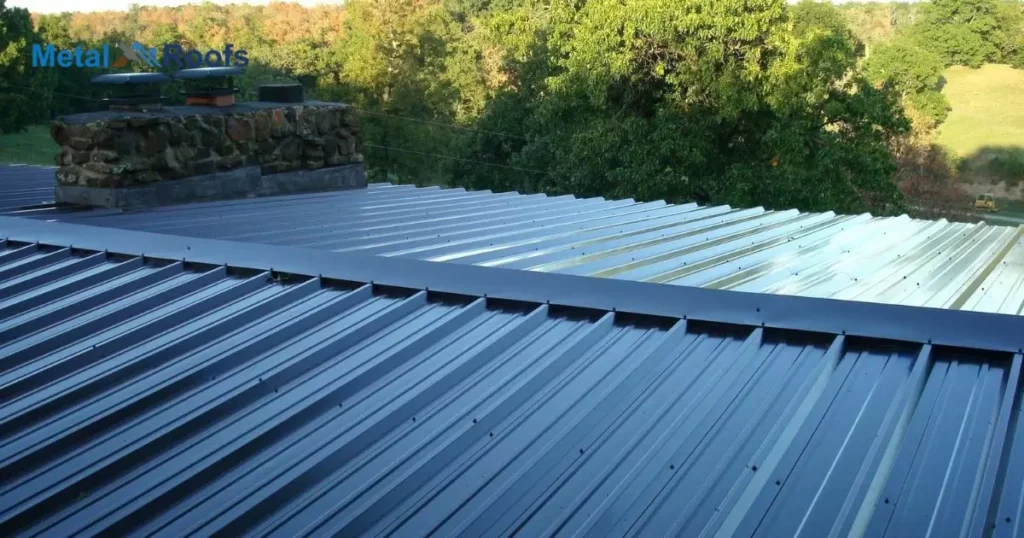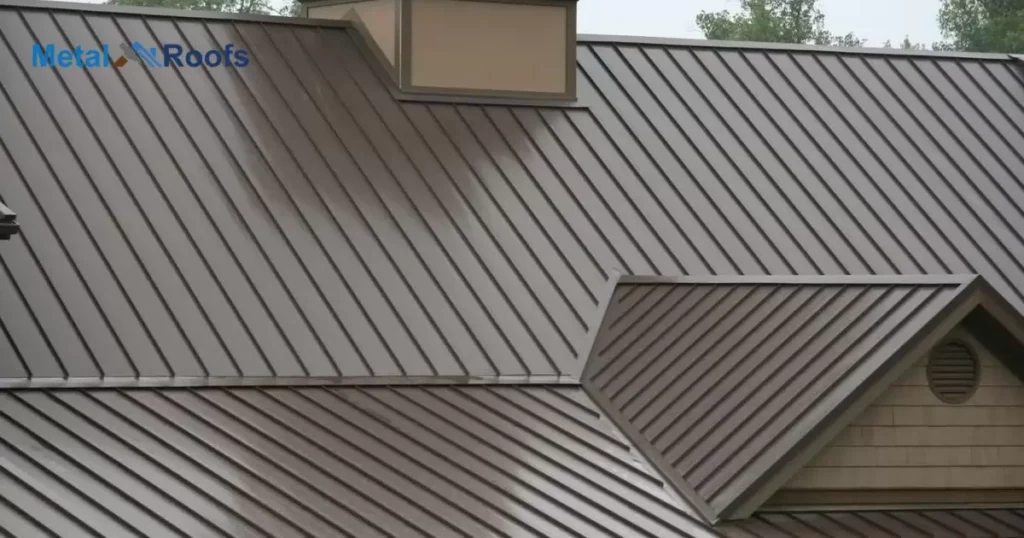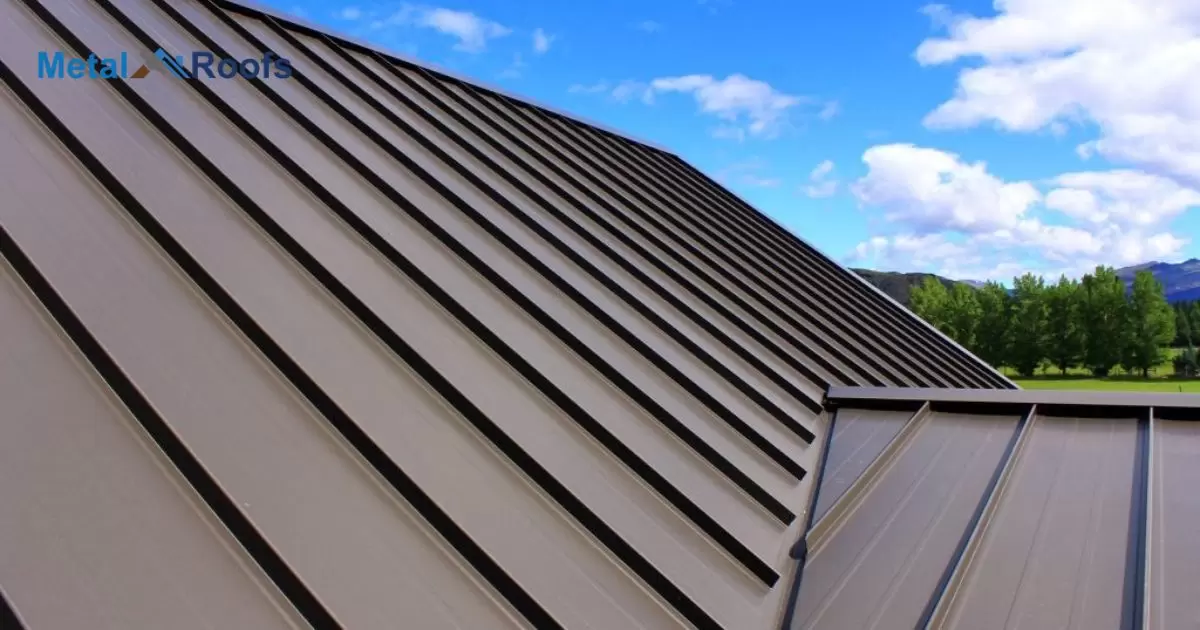Mill finish metal roofs have a raw aluminum color and surface straight from the steel mill without paint or coatings. The unfinished dull gray appearance and natural aluminum patina are unique aesthetic characteristics that allow the roof to blend with varied styles of architecture.
The dull sheen is strikingly different. The raw, unpainted aluminum material surprises. Its coarse texture juxtaposes smooth surroundings. The blend of industrial and natural intrigues. An organic patina will evolve uniquely over time.
The unfinished look attracts attention. Yet it meshes with various architectural styles. The mill marks and bare metal patinate over time. Gaining a dynamic, living personality. In contrast to static factory finishes. The rawness complements modern to traditional buildings. Adding depth and visual interest.
Key Takeaways
- Mill finish metal roofs have a raw, untreated surface.
- They’re cost-effective but vulnerable to corrosion.
- Regular maintenance is essential for longevity.
- Versatile for customization with coatings or finishes.
- Consider environmental factors for optimal performance.
Advantages And Disadvantages Of Mill Finish
The choice of a mill finish for a metal roof comes with its own set of advantages and disadvantages:
Advantages
Cost-effective: Mill finish metal is typically less expensive compared to finished or coated metal options, making it an attractive choice for budget-conscious projects.
Natural appearance: The untreated surface of a mill finish metal roof can provide a raw, industrial aesthetic that some prefer for their buildings.
Versatility: Mill finish metal can be further treated or coated to meet specific aesthetic or performance requirements, offering flexibility in customization.
Easy to touch up: Minor scratches or imperfections on a mill finish can often be easily touched up with paint or other coatings, minimizing maintenance costs.
Disadvantages
Susceptible to corrosion: Without protective coatings, mill finish metal is more vulnerable to corrosion, especially in harsh environments or climates with high humidity or salt exposure.
Limited weather resistance: Mill finish metal may not offer the same level of weather resistance as coated or treated options, potentially leading to premature deterioration in extreme weather conditions.
Maintenance requirements: While minor imperfections can be touched up relatively easily, mill finish metal may require more frequent maintenance to prevent corrosion and maintain its appearance over time.
Limited aesthetic options: The natural appearance of mill finish metal may not suit all architectural styles or design preferences, limiting aesthetic options for some projects.
Ultimately, the decision to use a mill finish for a metal roof depends on factors such as budget, desired aesthetics, environmental conditions, and long-term maintenance considerations.
Mill Finish Suitable For Coastal Environments

Mill finish metal roofs can be cost-effective choices for coastal areas. The untreated surface may blend naturally with coastal environments, offering a raw, industrial look.
Without proper coatings, strips under metal roofing are prone to corrosion from salt exposure. Regular maintenance is crucial to prevent deterioration over time. Consider additional protective treatments for extended durability in harsh coastal climates.
Addressing The Suitability Of Mill Finish In Coastal Climates Due To Corrosion Risks
In coastal climates, mill finish metal roofs face corrosion risks due to salt exposure. Without protective coatings, these roofs are susceptible to rust and deterioration.
Regular maintenance is crucial to prevent damage and ensure longevity. Upgrading to coated or treated options can enhance weather resistance and reduce maintenance needs.
Maintenance Considerations For Mill Finish
Maintenance for mill finish metal roofs is essential. Without protective coatings, they’re prone to corrosion. Regular inspections and touch-ups are necessary to prevent deterioration. Minor imperfections can be easily fixed with paint.
Harsh environments may require more frequent maintenance. Consider coating options to enhance durability and weather resistance. Overall, proactive maintenance ensures the longevity and performance of mill finish metal roofs.
Visual Appearance Options With Mill Finish
Mill finish metal roofs offer various visual appearance options. The untreated surface provides a raw, industrial look, ideal for some projects.
It can be further enhanced with coatings or finishes to suit specific aesthetic preferences and performance needs. Whether left as is or customized, mill finish metal roofs provide versatility and cost-effectiveness for different architectural styles and design requirements.
Comparisons Between Mill Finish And Other Finishing Techniques
Mill finish is the untreated surface of metal products after manufacturing. Contrasting it with other finishing techniques:
Anodizing: Provides corrosion resistance and color options, unlike mill finish.
Polishing: Creates a glossy surface, enhancing aesthetics and some protection, unlike the rough mill finish.
Powder Coating: Offers superior corrosion and abrasion resistance compared to untreated mill finish.
Painting: Adds color and protection, which mill finish lacks.
Brushed Finish: Provides a textured appearance, enhancing aesthetics, unlike the raw mill finish.
Galvanization: Protects against corrosion, unlike the vulnerable mill finish.
Each finishing method offers specific advantages over the raw mill finish, catering to different aesthetic and functional needs.
Factors Impacting Performance Of Mill Finish Metal Roofs

| Factors | Impact |
| Environmental Conditions | Weather exposure accelerates corrosion. |
| Salty Air or Industrial Pollutants | Increase corrosion rates. |
| Regular Maintenance | Crucial for preserving performance. |
| Protective Coatings or Treatments | Enhance durability and resistance. |
The performance of mill finish metal roofs depends heavily on environmental factors. Exposure to harsh weather like rain, snow, and UV rays can accelerate corrosion and deterioration. Additionally, proximity to salty air or industrial pollutants can further impact the lifespan of the roof.
Regular maintenance plays a crucial role in preserving the performance of mill finish metal roofs. Inspecting for signs of corrosion and promptly addressing any issues can prevent small problems from becoming larger ones. Applying protective coatings or treatments can enhance the roof’s durability and resistance to environmental stressors.
Frequently Asked Questions
What are the different types of metal roofing?
The different types of metal roofing include standing seam, corrugated, and metal shingles. Each offers unique benefits in terms of appearance and durability.
What type of metal is used for roofing?
Common metals used for roofing include steel, aluminum, and copper.
What is striated metal roofing?
Striated metal roofing features linear patterns for added texture and visual appeal.
Conclusion
Mill finish has a raw, organic aesthetic. The exposed grain and untreated sheen present an industrial style. It blends with modern and traditional buildings. Developing natural patina over time that is entirely unique. Requiring maintenance to offset the unprotected surface.
The mill finish look is uncommon for roofing. Offering subtle visual pop that integrates well. It saves upfront costs despite needing frequent care. The organic patina is ever-evolving. For those desiring natural, dynamic architectural interest.











